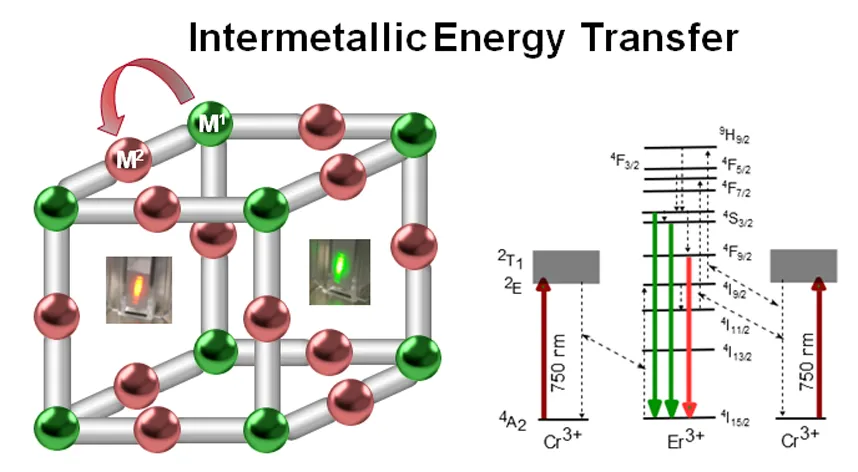| Consortium: | Prof. Dr. Michael Seitz, Tübingen University of Tübingen Institute for Inorganic Chemistry |
| Dr. Andrey Turshatov, Karlsruhe Karlsruhe Institute of Technology Institute for Microstructure Technology | |
| Projekt: | Directed Energy Transfer in Luminescent Coordination Networks |
| Abstract: | The goal of the project is the realization of lanthanoid-based, heterometallic COORNET architectures with well-defined, nonstatistical metal distributions that show energy transfer (EnT) involving lanthanoid photoactive centers. For this purpose, new COORNETs based on trivalent lanthanoid ions and d-block luminophores will be synthesized and the photophysical properties relating to EnT will be analyzed and correlated to the structural and electronic parameters of the network. In particluar, emphasis will be given to the development of COORNETs with near-IR-to-visible upconversion (UC) luminescence. |
| Publications: | J. Wahsner, M. Seitz, "Synthesis of Inert Homo- and Heterodinuclear Rare Earth Cryptates" Inorg. Chem. 2015, 54, 9681 DOI: 10.1021/acs.inorgchem.5b01922 |
| C. Doffek, M. Seitz "The Radiative Lifetime in Near-IR Luminescent Ytterbium Cryptates - The Key to Extremely High Quantum Yields" Angew. Chem. Int. Ed. 2015, 54, 9719 DOI: 10.1002/anie.201502475 | |
| F. Marsico, A. Turshatov, R. Peköz, Yu. Avlasevich, M. Wagner, K. Weber, D. Donadio, K. Landfester, S. Baluschev, F. R. Wurm "Hyperbranched Unsaturated Polyphosphates as Protective Matrix for Long-Term Photon Upconversion in Air" J. Am. Chem. Soc. 2014, 31, 11057 DOI: 10.1021/ja5049412 | |
| C. Wohnhaas, V. Mailänder, M. Dröge, M. Filatov, D. Busko, Y. Avlasevich, S. Baluschev, T. Miteva, K. Landfester, A. Turshatov "Triplet-triplet Annihilation Upconvertion Based Nanocapsules for Bioimaging Under Excitation by Red and Deep-red Light" Macromol. Biosci. 2013, 10, 1422 DOI: 10.1002/mabi.201300149 | |
| M. Oldenburg, A. Turshatov, D. Busko, S. Wollgarten, M. Adams, N. Baroni, A. Welle, E. Redel, C. Wöll, B. S. Richards, I. A. Howard "Photon Upconversion at Crystalline Organic–Organic Heterojunctions" Adv. Mater. 2016, 28, 8477 DOI: 10.1002/adma.201601718 |
